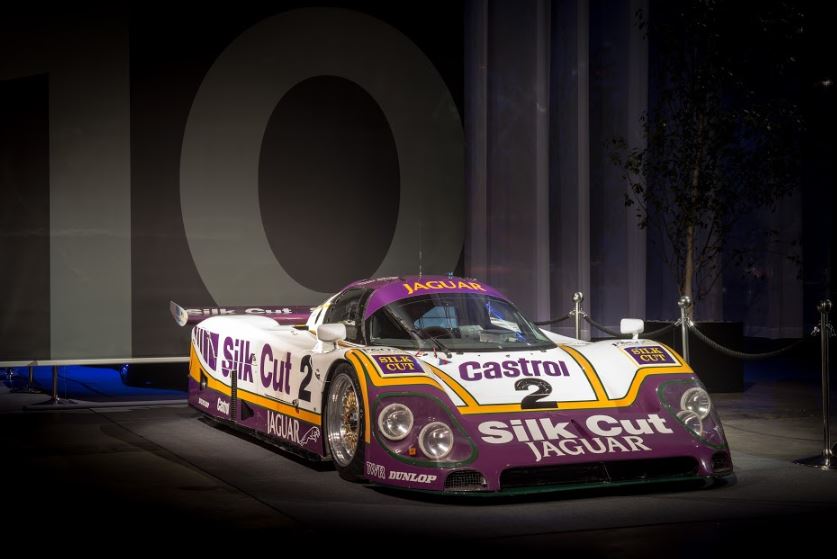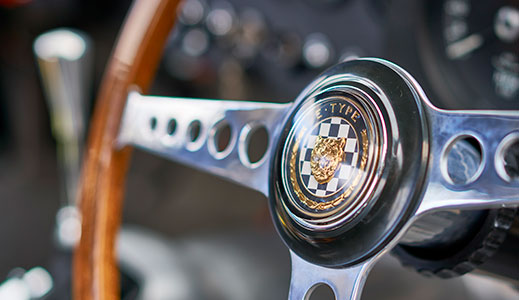Andy Wallace Q&A
The British sportscar veteran and 1988 Le Mans winner is competing against Stratstone's Lightweight E-type at Classic Le Mans in the 1955 Le Mans-winning D-type. We caught up with him to talk endurance racing and Jaguar.

When you joined Jaguar in 1988, you were a rising single-seater star looking towards Formula 1. Did sportscars feel like a sideways step?
Not at all. I'd been to Le Mans three times as a kid - doing one of those Page & Moy coach trips with my Dad. So, Le Mans was something I was very aware of. In 1986, I won the British F3 championship, so I went to see all the F1 teams, because that was the normal next step. They were keen to get me in a car, but only if I found US$600k, or whatever it was at the time. I probably had £10 to rub together! So, I struggled to see where I'd go next. At the time, moving from single-seaters to sportscars was perhaps a bit of a distraction, but it was also a big opportunity in its own right.
It was an incident in the end-of-year Formula 3 street race at Macau that helped you get the attention of Jaguar…
Absolutely. I was racing against was Jan Lammers, who was part of the Jaguar team. There are two races at Macau, and I ended up winning both, but Jan was leading the first leg on the final lap. The Lisbao Corner is the last place you can pass. Jan was looking in his mirror, and I thought if he brakes as late as he can, I won't get by. He locked his brakes, though, and as he lost the back of the car I saw my chance. I dived down the inside and knocked him straight as we went wheel-to-wheel, but managed to get past him for the win. On the podium, he joked it was pretty good as he'd been set to hit the barrier. So, we became friends. Jaguar were looking for one more driver for Le Mans, and Jan got my name in the hat. I was aware of the history of the Jaguar team, and how big it was for them to be back at the front of sportscar racing. When I went to Paul Ricard to test with the team, there were quite a few drivers they were trying out, but I ended up getting the job.
Jaguar had just won the 1987 World Sportscar Championship. How did it feel to become part of what was a resurgent Jaguar team?
The team was clearly on a roll. For Le Mans, the XJR-9 used Jaguar's normally aspirated V12, which was actually based on a standard production unit. It wasn't an out-and-out racing engine. It was really solid, it had massive torque - it was a truly great engine. The only thing we didn't have was a turbo, so we couldn't wind the boost up for more power. In qualifying, we knew we wouldn't be anywhere Porsche and Mercedes, because they could turn the wick up with the turbo for a one-off lap. In the race, though, it's more about fuel economy, and we were pretty good on that front. A turbo engine is inherently efficient, but as they had to turn the boost down for reliability in the race, we all had a similar amount of horsepower and fuel usage.
Le Mans is a unique track with a unique atmosphere. What was it like racing there for the first time?
The first time you leave the pit lane, you look across and there's a sea of people in the grandstands - particularly the British Jaguar fans, who had a real rivalry with the German Porsche and Mercedes teams that year. You've also got the Dunlop Bridge towering over you. I'd raced in Formula 3 in Britain, and I'd raced at Macau, but it's small fry compared to Le Mans. Also, it was totally different being part of such a big team - you've got a lot more people, more equipment, and there's a massive leap in professionalism from national racing. You realise you're just one cog in the team. But, equally, you're a cog that can mess everything up for everyone, so it's a big responsibility. Going out onto the track, you know how important it is.
In 1988, the Mulsanne straight was an uninterrupted 3.7-mile run from Terte Rouge to Mulsanne, where speeds reached 240mph. It's also a normal road, used every day of the year. What was that like to drive?
There was no speedometer in the XJR-9, but you could check the rev counter to get an idea. The first time I went out onto the Mulsanne Straight in practice I pushed it up to 200mph - which I'd never done in a car before, apart from testing at Paul Ricard. You're sat there, and the scenery is rushing past. Then, all of a sudden a Mercedes and a Porsche go by you like you're standing still. After a few laps, though, 240mph starts to feel normal. Because the Mulsanne was a normal road - and still is - you've got dips and crests, and because you've got a natural crown in the middle of the road, passing cars can be really hard. You start your pass to the other lane, but the camber pushes you back because of the big tyres. So, you put a bit more steering on, but when you eventually get over the top, you drift far too far. That would be okay if you're only doing 100mph, but you're not!
Did you expect to have a chance of winning Le Mans first time out?
Although it was my first time at Le Mans, I'd been racing professionally for around eight years, and in the end it's all the same - it's racing, and you're pretty confident in your own abilities. The only difference at Le Mans is the length of the race, and this is where I lacked the experience. Luckily, my team mates Jan Lammers and Johnny Dumfries - particularly Jan - were aware of that. Jan and Johnny worked together all year in the World Sportscar Championship, so they knew each other really well. When you put the third guy in the car - me - that's potentially the one who can screw up your race, because they're the odd one out. They knew I could drive the car quickly, but they also probably thought that I was going to screw it up because I don't know about 24-hour endurance racing, so they gave me the crash course.
With three drivers in each car, the Le Mans 24 Hours really is a team event. It's also about reliability and having a trouble-free race, as much as being fast…
The trick to winning at Le Mans is being fast, without destroying your weakest link. Jan made everything fit together. In fact, he sat me down and he said that we were going to lose the race, because the gearbox would probably break. So, we figured out was that we'd take the Esses - which were normally third gear - in fourth. There were a couple of other corners where we stayed a gear higher, and this is where the Jaguar V12 delivered. Because the engine was so torquey, it didn't make a blind bit of difference to the lap time. But, with around 50 gear changes per lap, and 395 laps in the race, you can eliminate a good number of changes, and limit the wear on the gearbox. Especially as you're losing two shifts - down, then back up - each time. Of course, in the race, around 24 minutes from the end, we had a gearbox issue, but we were able to nurse it to the end. If we hadn't taken care of it from the start of the race, it would have failed much, much earlier.
You've won modern sportscar racing's triple-crown of blue riband events - the Daytona 24 Hours, the Sebring 12 Hours and the Le Mans 24 Hours. Is one of those tougher to win, or more important, than the others?
They're all different. Le Mans is perhaps the most important, but physically Daytona can be the most challenging for a driver. The long straights at Le Mans mean that you have incredibly high speeds for long period of time. If you make a mistake in traffic, the consequences can be much higher, but the straights also give you time to gather your thoughts and get yourself together. In Daytona, which is a really tight track and busy with traffic, you're more likely to make a mistake as you're always passing cars, but the speeds and consequences will be lower. At Le Mans, you're only allowed three drivers, but most teams use four nowadays at Daytona. Sebring is a 12-hour race, so the good thing is you don't lose a good night's sleep, but it's a punishing track - as physically tough as a 24-hour race. A lot of teams do 24-hour tests at Sebring, because if it's okay there, it's okay anywhere.
Tell me about the car you're racing and how you got to be here this weekend…
This is actually my second Le Mans Classic. I did a total of 22 Le Mans 24 Hours between 1988 and 2010. When you get to a certain age you probably shouldn't be doing Le Mans 24 Hours at a professional level, because it's really tough. But it's great to come back and do this. I've driven Nigel Webb's Jaguar D-type before. It's the car that won Le Mans in 1955, but the interesting thing is that the engine has changed thanks to modern tolerances - which means it produces a bit more power. Back in the day, it probably would have been around 300bhp. It's considerably more than that now, and really wasn't designed for that level of power. So, it can be a bit of a handful. I really like driving it, but I'm always wary that I can bite you. Still, it's all good fun.
Discover More
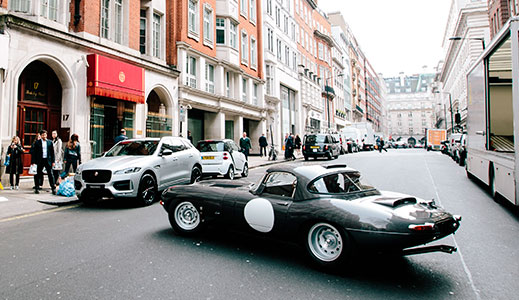
A New Home In Mayfair London
The Jaguar Lightweight E-type arrives at Stratstone's London showroom
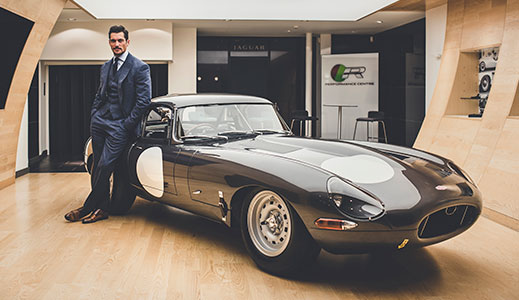
David Gandy Visits the E-type
Britain's leading male model talks about his passion for style and cars
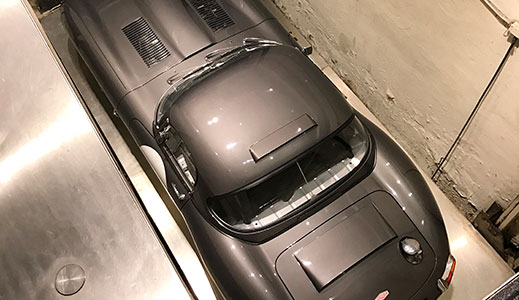
Exclusive Appearance in Mayfair
YouTube influencer and car enthusiast Shmee150 visits the Lightweight E-type

